|
_Now Available in E-Book and Paperback! If you haven't already, please start by reading Lesson 1: The North Star before proceeding. As we add more constellations to your repertoire, don't get discouraged if you can't remember all of them right away. Learning your way around the night sky takes patience. Take it one or two constellations at a time, and quiz yourself every time you're outside on a clear night. 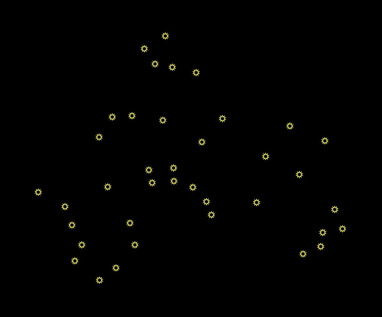 The Circumpolar Constellations: The stars closest to Polaris (the North Star) will always share that region of sky. Since Polaris will never rise or set, those nearby stars will also be above the horizon most of the time. These are good constellations to become familiar with, because they are always "up" when you want to be stargazing. Quiz from the last lesson: Can you find the Big Dipper? Can you use the pointer stars to find Polaris? How about the Little Dipper? 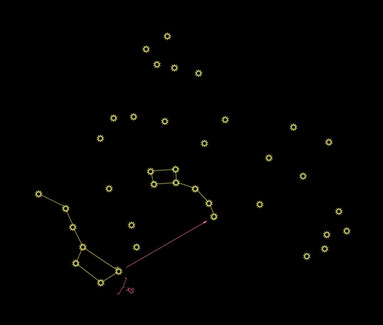 The Big and Little Dippers: OK, you remember how to find these from last time. Here they are with some distractions. Three more circumpolar constellations are shown here. We'll go through them one at a time. Remember that the stars are not all the same level of brightness, but they're shown equally here for simplicity. 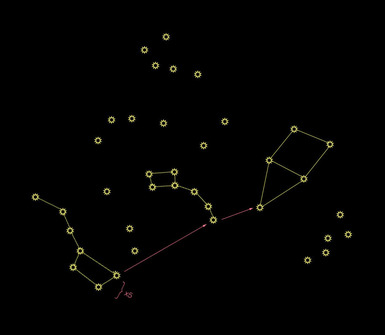 Cepheus, the King: If you use the pointer stars on the Big Dipper to find Polaris, and then keep going, you'll come to the tip of the crown of King Cepheus. The square is his head, and the triangle is his crown. He's upside-down here. Cepheus may be a bit tricky to find, as he is composed of mostly fainter stars. Look for him if you are somewhere without much light pollution and no full moon. 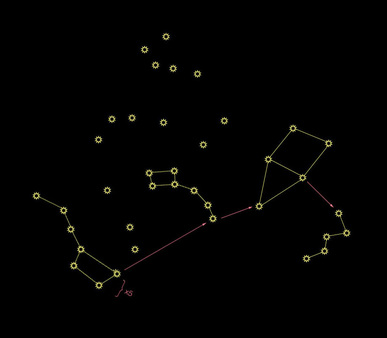 Cassiopeia, the Queen: There are two stars marking where Cepheus's crown meets his face. Cepheus always looks away from the little dipper and toward his wife, Queen Cassiopeia, so the star farther away from the Little Dipper is his eye. Follow Cepheus's gaze to Queen Cassiopeia. She's the Queen of M&Ms! OK, not really, but she looks like an "M" or a "W" in the sky. The shape represents her royal throne, in which she sits admiring herself all day. 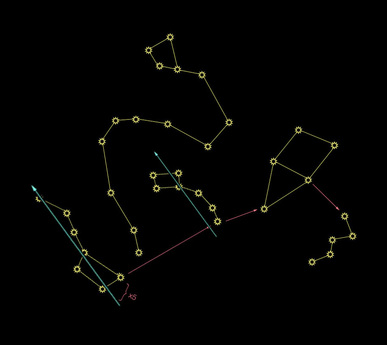 Draco, the Dragon: If you create two roughly parallel lines out of the Big Dipper and the Little Dipper, you'll see a semi-straight line of stars in between. This is the end of the tail of Draco. Follow it up, and curve around the little dipper, then snake your way up again to find the wonky trapezoid that marks his head. I like to think of Draco as the type of dragon one would find in a Chinese New Year Parade: a head followed by a long, colorful tail. Bonus Nerdy Bits: The name "Draco" has become quite recognizable as of late, from J.K. Rowling's Harry Potter series. Rowling used many names from astronomy for her characters, including Sirius, Bellatrix, Pollux, Regulus, Arcturus, Alphard, Cassiopeia, Cygnus, Andromeda, Orion (OK, so it's mostly members of the Black family...) Comments are closed.
|
Topics
All
Archives
May 2021
|
HOME |
PHOTOGRAPHY COLLECTIONS
|
© COPYRIGHT 2020. ALL RIGHTS RESERVED.
|

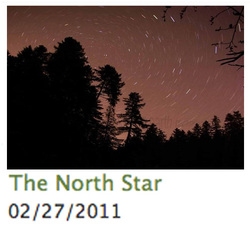
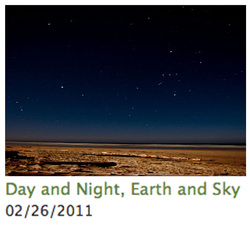
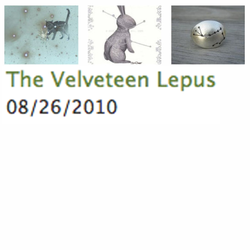
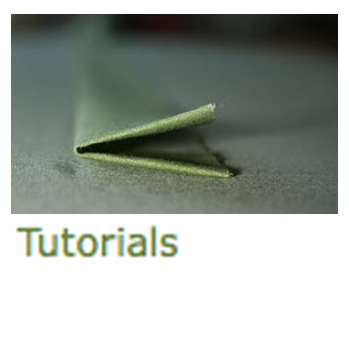
 RSS Feed
RSS Feed

